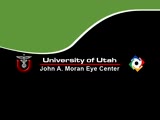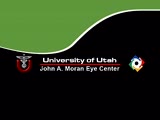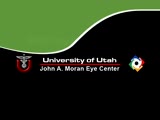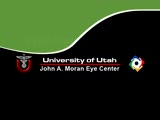John A. Moran Eye Center Neuro-Ophthalmology Collection: A variety of lectures, videos and images relating to topics in Neuro-Ophthalmology created by faculty at the Moran Eye Center, University of Utah, in Salt Lake City.
NOVEL: https://novel.utah.edu/
TO
Filters: Collection: "ehsl_novel_jmec"
| Identifier | Title | Description | Subject | ||
|---|---|---|---|---|---|
| 226 |
 |
Ultrasonography_techniques | Ultrasonography Techniques | This video describes and demonstrates the various techniques for examination of the eye using ultrasonography, including A-scan, B-scan and immersion. | Ultrasonography Eye Examination Techniques |
| 227 |
 |
Immersion_technique | Ultrasonography: Immersion Technique | This video describes and demonstrates the immersion technique for examination of the eye using ultrasonography. | Ultrasonography Eye Examination Techniques |
| 228 |
 |
NOVEL_Moran_2-16 | Unilateral Blepharospasm | Example of patient with unilateral blepharospasm. | Blepharospasm |
| 229 |
 |
2-5 | Upbeat Nystagmus | Example of a patient with upbeat nystagmus. Shows vertical jerk nystagmus with fast phases in the up direction. Localizes to brain stem, and occurs with strokes, demyelination, and tumors. | Upbeat Nystagmus; Blepharospasm |
| 230 |
 |
NOVEL_Moran_3a-22 | Vestibular Nystagmus | Example of patient with vestibular nystagmus. Patient is led through instructions for direction of gaze. Shown also with Frenzel goggles. | Vestibular Nystagmus |
| 231 |
 |
2-15 | Vestibular Nystagmus | Discussion of vestibular nystagmus. Seen with peripheral disorders and central disorders, and in two varieties: spontaneous and positional. Horizontal jerk with small amplitude. | Vestibular Nystagmus; Jerk Nystagmus; Peripheral Vestibular Nystagmus; Positional Nystagmus |
| 232 |
 |
Webvision-VEP-Creel.pdf | Visually Evoked Potentials | Detailed explanation of visually evoked potentials. The terms visually evoked potential (VEP), visually evoked response (VER) and visually evoked cortical potential (VECP) are equivalent. They refer to electrical potentials, initiated by brief visual stimuli, which are recorded from the scalp overl... | Visually Evoked Potentials |
| 233 |
 |
2-22 | Voluntary Nystagmus | Example of patient with voluntary nystagmus. Discussion of how a lack of uniform, patterned movement of the eyes along with associated lid movements suggests that activity is voluntary. | Voluntary Nystagmus; Voluntary Flutter |
| 234 |
 |
NOVEL_Moran_2-17 | Wall-Eyed Bilateral Internuclear Ophthalmoplegia (WEBINO) | Example of patient with horizontal binocular diplopia. Demonstration of exam, which shows alternating exotropia in cover test. As patient follows object, right eye does not pass the midline as the object moves to the left, while left eye go slightly past the midline, but does not abduct completely. ... | Internuclear Ophthalmoplegia; WEBINO |
| 235 |
 |
NOVEL_Moran_2-26 | Wall-Eyed Bilateral Internuclear Ophthalmoplegia (WEBINO) | Example of patient with Wall-Eyed Bilateral Internuclear Ophthalmoplegia. Patient is led through instructions for direction and distance of gaze. | Internuclear Ophthalmoplegia; WEBINO |
| 236 |
 |
Bell_J_Neuro_GR_Duanes_PPT | Why Don't You See Double? | This presentation was given at the Neurology Grand Rounds in Fall 2011 at the University of Utah. A number of Duane Syndrome cases are covered. Related video can be found in this collection at: Duane's Syndrome Type I: http://content.lib.utah.edu/u?/EHSL-Moran-Neuro-opth,130 Duane's Syndrome Type I... | Duane's Syndrome; Duane's Type I; Duane's Type III |
